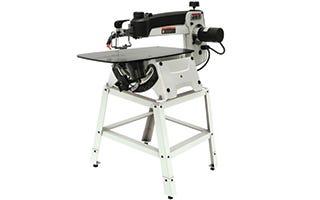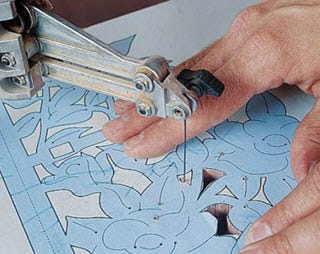
If you're an occasional scroll saw user, you might think that one scroll saw blade is pretty much like another. The fact is, there's quite a range not only in type and purpose among scroll saw blades, but also in quality, and the differences can really show up in how a blade performs. How do you pick a good one?
As with most tools, judging quality by the reputation of the manufacturer isn't foolproof, but it does tend to lead you in the right direction. And if you ask anyone who spends a lot of time in front of a scroll saw about good blades, you're likely to hear the name Olson. For years the Olson Saw Company has been the leader in professional quality band saw and scrolls saw blades.
But, even if you know who makes the best blade, there's still the matter of sorting through all the different varieties to find the one that's best for what you have in mind. So, here are a few of the basics
Blade Performance Begins With The Manufacturing Method
The best are ground from hardened steel with a stone wheel. Ground blades, like Olson's PGT (precision ground tooth) blades cut straighter and smooth enough to all but eliminate sanding. They also last three to four times longer than standard blades. They're the best choice for tight scroll work where chip-free edges and minimal sanding really matter.
A milled blade is formed by a milling cutter from soft steel and then heat tempered, much the same as a band saw blade. They're close in quality to ground blades, even though the milling process causes some "material flow" which can potentially affect how straight the blade will want to cut. With close manufacturing tolerances, like Olson’s .0015' (1-1/2 thousandths of an inch) most users won't even notice the difference.
Olson MachSpeed Blades are an example of a precision milled blade, and are patterned after the PGT blade designed. They're a great choice if what you want is reliably smooth cut as quickly as possible in hard or soft woods.
Blade Size & Tooth Configuration Are Important
You have quite a range to pick form, there, and the numbers and nomenclature can be a little confusing. Fortunately, help isn't far off. On the Olson website, you'll find a handy Scroll Saw Blade Identification PDF. Print one off and post it in your shop: You'll never again be at a loss when it comes to choosing the best blade for a given task.

In general, the reverse tooth design shared by Olson's PGT and MachSpeed blades offers the best overall cut, especially when it comes to the top and bottom surface of the material. The combination of the upward and downward pointing teeth help produce a smooth, splinter-free edge on both sides of the material.
Crown tooth and spiral blades are two of the most common specialized scroll saw blades. Similar to the reverse tooth design, a crown tooth blades cut both on the up and down stroke. Crown tooth blades are a top choice for extra-smooth and chip-free cuts in plastics. Spiral bits, as the name implies, are twisted into a spiral shape, and consequently can cut in any direction. They're great for cutting shapes with many abrupt changes in direction and tight radius corners.
And that's just the beginning: The Olson website offers more detailed information on what different types of scroll saw blades do best and why. Another good resource is the scrollsawer.com forum. There you'll find everything from basic advice from veteran scroll saw users to opinions on specific scroll saw products, like this one, posted by senior member "Old Mooner": "I have yet to find a better blade for segmentation work than the Olson precision ground (PGT) blade. They last a long time, and do not break no matter how much you abuse them..." And if you can't trust Old Mooner, who can you trust?
Original article and pictures take https://www.rockler.com/learn/what-you-should-know-about-scroll-saw-blades/ site
Комментариев нет:
Отправить комментарий